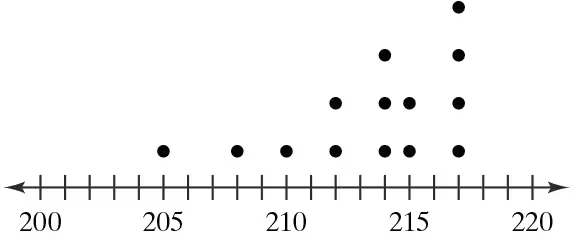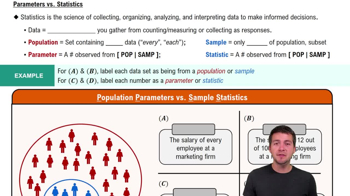Here are the essential concepts you must grasp in order to answer the question correctly.
Descriptive Statistics
Descriptive statistics summarize and describe the main features of a dataset. This includes measures such as mean, median, mode, and standard deviation, which provide insights into the central tendency and variability of the data. In the context of the question, understanding descriptive statistics helps in interpreting the characteristics of the samples, such as the time taken to drive to work or the ages of residents.
Recommended video:
Parameters vs. Statistics
Data Visualization
Data visualization involves representing data graphically to identify patterns, trends, and outliers. The provided image is a scatter plot, which displays individual data points and can reveal relationships between variables. In this case, visualizing the data helps match the plots with the corresponding descriptions of the samples, enhancing comprehension of the data's distribution.
Recommended video:
Visualizing Qualitative vs. Quantitative Data
Sampling
Sampling is the process of selecting a subset of individuals from a population to estimate characteristics of the whole group. Different sampling methods can lead to different insights and biases. In the question, understanding the context of each sample (e.g., employees, students, sports cars, residents) is crucial for interpreting the data accurately and making valid comparisons.
Recommended video:
Sampling Distribution of Sample Proportion







